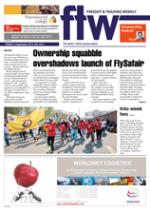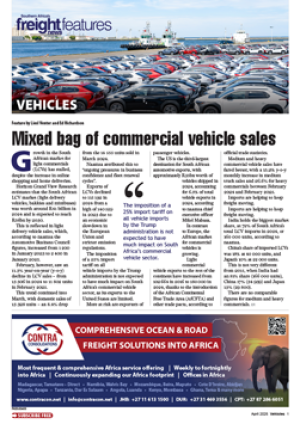Despite a significant increase in
container volumes in the first
half of 2013, Maersk Line South
Africa remains only cautiously
optimistic in its outlook for the
rest of the year as the country is
not out of the woods yet.
Managing director Jonathan
Horn told
FTW that the
jury was still
out on what to
expect from the
second half of
the year, despite
all indications
pointing towards a sustained
volume increase.
“It is extremely positive that
volumes did not only hold up
in the first half of the year but
showed a slight increase, with
imports and exports growing
between 5-7% on an annualised
basis,” he said. “It is hard to say
if this is a clear indication of a
recovering economy because
while exports have definitely
picked up, import growth
is declining - with a higher
growth level in the first quarter
than in the second.”
With consumption still
under pressure and the lessthan-
favourable exchange rate
continuing to impact, Horn said
he believed there were still some
tough times ahead.
“Generally speaking the
second half of the year is better
for imports than the first
primarily due to stocking up
for the festive
season – but it
is debatable if
we are going to
see a sustained
volume
increase. What
the current
figures do, however, is point to
a slow improvement in trading
conditions which is hopefully
a precursor to a healthier
economy than what we have
seen in the past few years.”
Horn said
with projections
by the Reserve
Bank that
South Africa’s
Gross Domestic
Product would
only grow by
2% this year,
the import and
export figures
experienced
at mid-year
were encouraging, but not
enough to point towards
full recovery.
According to Maersk Line
South Africa data, the weaker
rand has contributed somewhat
to the current export volume
increase as it has made our
exports cheaper. However,
given that exports are to a
large extent commodity based,
issues such as commodity
prices and physical demand for
commodities from the Far East
in particular play a larger role.
Some 75% of export volumes
in containerised exports
comprised agriculture and
non-manufactured goods.
While imports still grew in
the second quarter, although
at a much slower
rate than the
first quarter, exports increased
significantly.
Refrigerated cargo export
volumes saw solid growth
for the market as a whole,
said Horn, even in the face
of freight rate increases, but
manufactured export growth
remained under pressure.
Horn said expectations for
the rest of the year were that
imports would probably grow
at low single-digit levels
and that exports would
probably continue to
grow at slightly higher
levels.
INSERT
5-7% Annual growth in imports
and exports
INSERT & CAPTION
It is debatable if
we are going to
see a sustained
volume increase.
– Jonathan Horn

